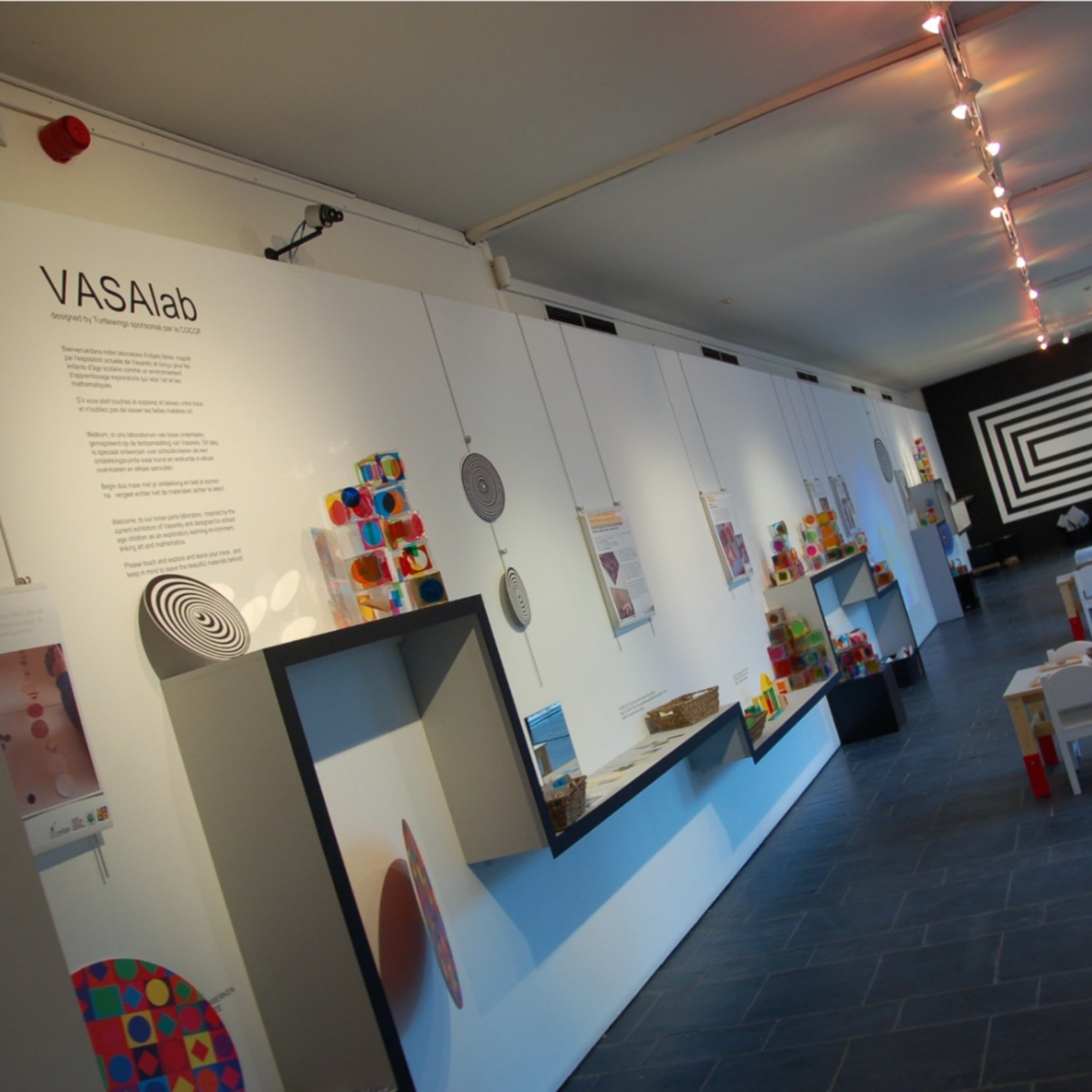Vasa Lab
Interior Design & Curriculum box for Museum Ixelles
In collaboration with the Museum of Ixelles and with a grant from the COCOF, we created a rich experience for preschool students both in their classroom and within the museum space, all inspired by the work of Victor Vaserely.
The project was called the Vasalab and was initially only to connect early math learning and art; however, we went one step further and included all preschool concepts and explorations beyond art.
VASAlab aimed to enhance the learning experience of the preschooler's visit to the exhibition by providing a tactile and interactive space where they could explore the concepts and artworks of Victor Vasarely.
The design project included creating a space within the museum like an art laboratory featuring interactive areas that allowed the children to explore and interact with Vasarely's artworks and preschool concepts. The spaces and activities were designed in such a way as to attract children's varying interests and abilities, from logic to movement. It was created to require little instruction, allowing children to come in freely, explore, and engage immediately.
Materials used in the lab:
Transparent static coloured circle stickers, paper explorations, 3D plastic boxes and more adhesive transparent coloured circles, coloured lights to make shadow illusions, sand table patterns, many educational puzzles to explore ways and math, light table and floor mirrors with coloured plexiglass blocks, finally a full wall exploration in black and white with black body suits of varying sizes.
“In 2013, the Musée d’Ixelles had the excellent opportunity to develop a project in collaboration with Turtlewings for an exhibition dedicated to the famous artist Victor Vasarely. Initially designed for young children (from a few months old), the design of the space and its playful activities attracted a broad audience with its intelligent proposals and multi-sensory approach to art. I’m thrilled that Turtlewings is coming back. We loved the VasaLab. It’s still an inspiration for our guides.”
Vasa Lab Classroom Box
To complement the visit to the museum, each received a box of materials and curriculum before their visit. The box included ten interactive activities that explore the concepts and themes of Victor Vasarely's work in combination with basic preschool concepts like compare and contrast and patterns. Materials were a mix of reused materials, found objects and new objects. The curriculum was designed to be age-appropriate and allowed the children to explore the world of Vasarely fun and engagingly.
Documentation (FR) from visits in the schools with VASAlab boxes before children came to space at the museum.











-
Enhancing Learning: Hands-on experiences help children better understand the concepts being taught. Children who touch, feel, and interact with exhibits are more likely to remember what they learned.
Developing Fine Motor Skills: Hands-on activities can help children develop their fine motor skills, essential for everyday activities such as writing, drawing, and manipulating objects.
Encouraging Creativity: Hands-on experiences can inspire children to be creative and think outside the box. By allowing children to experiment and explore, they can develop new and innovative ideas.
Increasing Interest in Art and Culture: By allowing young children to experience art and culture hands-on, they are more likely to develop a lifelong interest in these areas.
Strengthening Family Relationships: Hands-on experiences in museums and art galleries can be a fun family activity. They provide an opportunity for families to bond and create memories together.
























